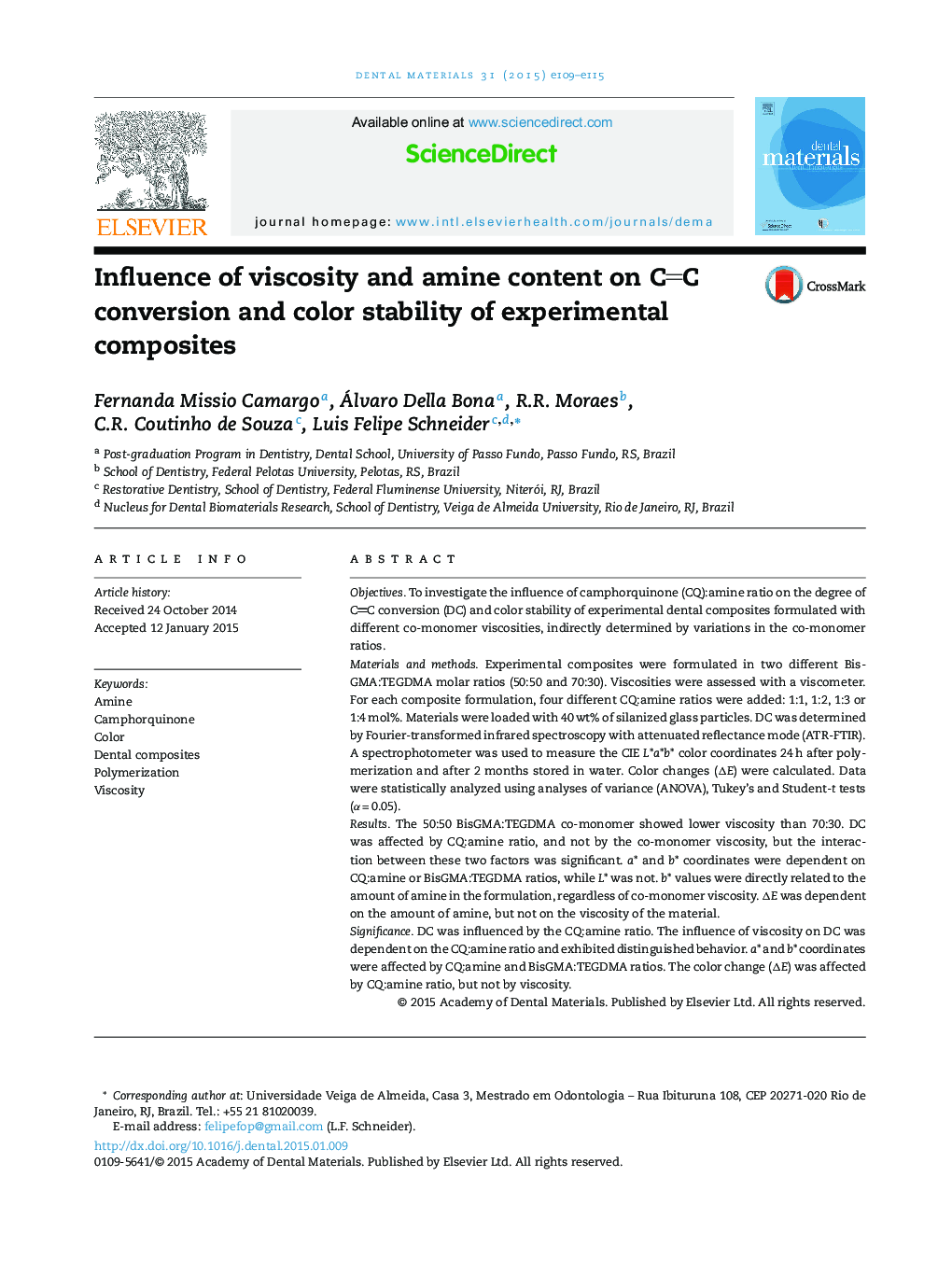| Article ID | Journal | Published Year | Pages | File Type |
|---|---|---|---|---|
| 1420686 | Dental Materials | 2015 | 7 Pages |
•The degree of CC conversion was dependent on the CQ:amine.•The influence of viscosity on DC was dependent on the CQ:amine ratio.•The CQ:amine ratio had a significant influence on the yellow–blue axis data.•The overall color stability was only affected by the CQ:amine ratio.•The overall color stability was not affected by the materials’ viscosity.
ObjectivesTo investigate the influence of camphorquinone (CQ):amine ratio on the degree of CC conversion (DC) and color stability of experimental dental composites formulated with different co-monomer viscosities, indirectly determined by variations in the co-monomer ratios.Materials and methodsExperimental composites were formulated in two different BisGMA:TEGDMA molar ratios (50:50 and 70:30). Viscosities were assessed with a viscometer. For each composite formulation, four different CQ:amine ratios were added: 1:1, 1:2, 1:3 or 1:4 mol%. Materials were loaded with 40 wt% of silanized glass particles. DC was determined by Fourier-transformed infrared spectroscopy with attenuated reflectance mode (ATR-FTIR). A spectrophotometer was used to measure the CIE L*a*b* color coordinates 24 h after polymerization and after 2 months stored in water. Color changes (ΔE) were calculated. Data were statistically analyzed using analyses of variance (ANOVA), Tukey's and Student-t tests (α = 0.05).ResultsThe 50:50 BisGMA:TEGDMA co-monomer showed lower viscosity than 70:30. DC was affected by CQ:amine ratio, and not by the co-monomer viscosity, but the interaction between these two factors was significant. a* and b* coordinates were dependent on CQ:amine or BisGMA:TEGDMA ratios, while L* was not. b* values were directly related to the amount of amine in the formulation, regardless of co-monomer viscosity. ΔE was dependent on the amount of amine, but not on the viscosity of the material.SignificanceDC was influenced by the CQ:amine ratio. The influence of viscosity on DC was dependent on the CQ:amine ratio and exhibited distinguished behavior. a* and b* coordinates were affected by CQ:amine and BisGMA:TEGDMA ratios. The color change (ΔE) was affected by CQ:amine ratio, but not by viscosity.
